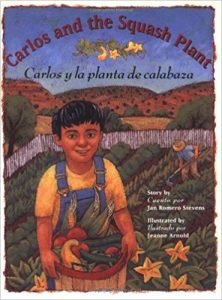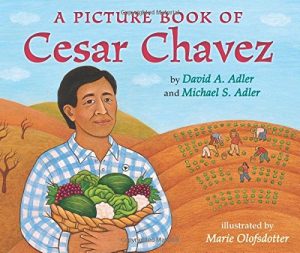 Marta’s sister Rosa calls her magnet collection junk, but Marta’s magnets help her make friends in her new home and help her retrieve a lost key for Rosa’s new friend.
Marta’s sister Rosa calls her magnet collection junk, but Marta’s magnets help her make friends in her new home and help her retrieve a lost key for Rosa’s new friend.
United States
Materials from United States of America
The Old Man And His Door
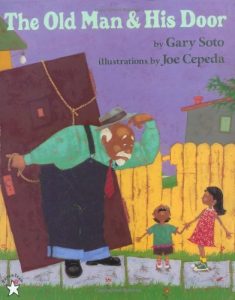 Who would bring the door, la puerta, to a picnic instead of the pig, el puerco? An old man who’s great at gardening but lousy at listening to his wife! “In the universal tradition of the wise-fool story, this gentle disaster tale is funny and affectionate….The combination is great for reading aloud.” — Booklist
Who would bring the door, la puerta, to a picnic instead of the pig, el puerco? An old man who’s great at gardening but lousy at listening to his wife! “In the universal tradition of the wise-fool story, this gentle disaster tale is funny and affectionate….The combination is great for reading aloud.” — Booklist
Carlos And The Squash Plant / Carlos Y La Planta De Calabaza
Chato Y Los Amigos Pachangueros

This lively tale of a party-loving barrio cat who throws a surprise celebration for his friend Novio Boy. With a lively text, bold art, and a setting and theme with Latinx flavor, this is an ideal choice for Spanish readers.
Sergio Makes a Splash
Even though he loves water, Sergio the penguin is afraid to swim in the deep water until he learns how.
Chato Y Su Cena
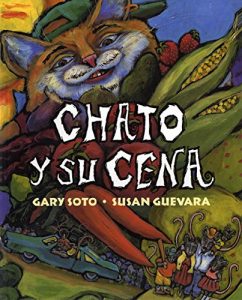 To get the “ratoncitos,” little mice who have moved into the barrio, to come to come to his house, Chato the cat prepares all kinds of good food: fajitas, frijoles, salsa, enchiladas, and more. Wisely, the mice bring along a canine friend who ensures that Chato eats tortillas and not them for dinner.
To get the “ratoncitos,” little mice who have moved into the barrio, to come to come to his house, Chato the cat prepares all kinds of good food: fajitas, frijoles, salsa, enchiladas, and more. Wisely, the mice bring along a canine friend who ensures that Chato eats tortillas and not them for dinner.
Orson Blasts Off!
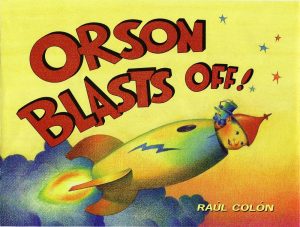 What’s a megabyte-loving kid to do when his computer breaks? BLAST OFF! Join Orson and his sidekick, Weasel, on a hair-raising adventure where they touch the North Pole…watch the eye of a storm wink…and fall through a black hole in outer space. Readers (but maybe not their parents!) will be amazed at what can happen when a creative kid is forced away from his computer screen. Raúl Colón’s picture book is filled with delicious word-play and all the fun of a comic book.
What’s a megabyte-loving kid to do when his computer breaks? BLAST OFF! Join Orson and his sidekick, Weasel, on a hair-raising adventure where they touch the North Pole…watch the eye of a storm wink…and fall through a black hole in outer space. Readers (but maybe not their parents!) will be amazed at what can happen when a creative kid is forced away from his computer screen. Raúl Colón’s picture book is filled with delicious word-play and all the fun of a comic book.
La Fiesta Del Abecedario
The Alphabet Festival
The Last Doll/La última Muñeca
 The beautiful, but old-fashioned, Sarita sadly watches as her shelf-mates are purchased by eager shoppers and taken home. She looks out through the dust-covered plastic of her box, and she worries that she will be the last one. Every day she preens and puts her best porcelain face forward, but every evening, she remains on the shelf.
The beautiful, but old-fashioned, Sarita sadly watches as her shelf-mates are purchased by eager shoppers and taken home. She looks out through the dust-covered plastic of her box, and she worries that she will be the last one. Every day she preens and puts her best porcelain face forward, but every evening, she remains on the shelf.
Finally one day, a tall man in a black mustache decides that she is perfect, and that she absolutely must be the last doll for his godchild, Teresa, on her quinceañera. Sarita’s alarm at still being last quickly shifts to pride when she realizes that sometimes people save the best for last.

